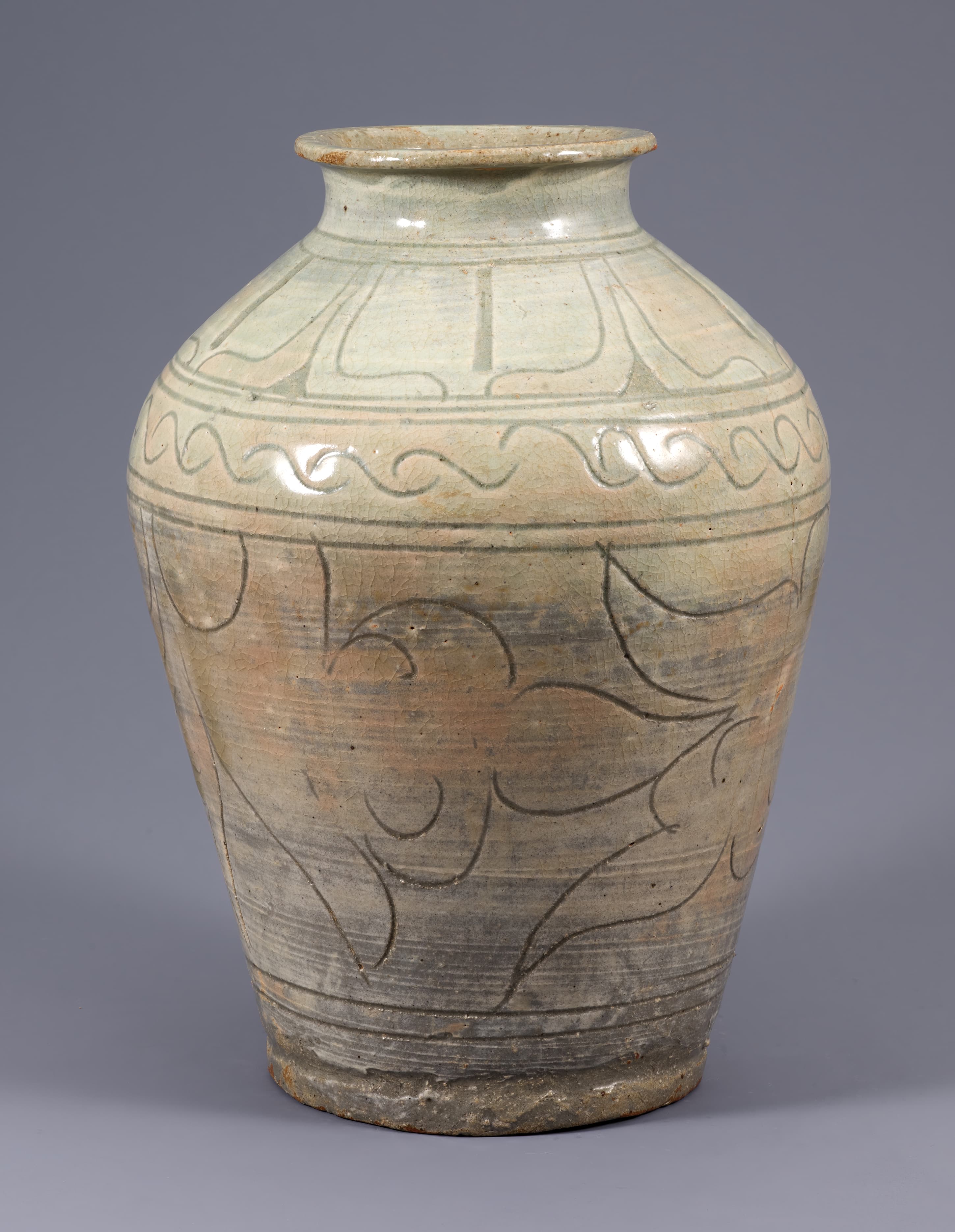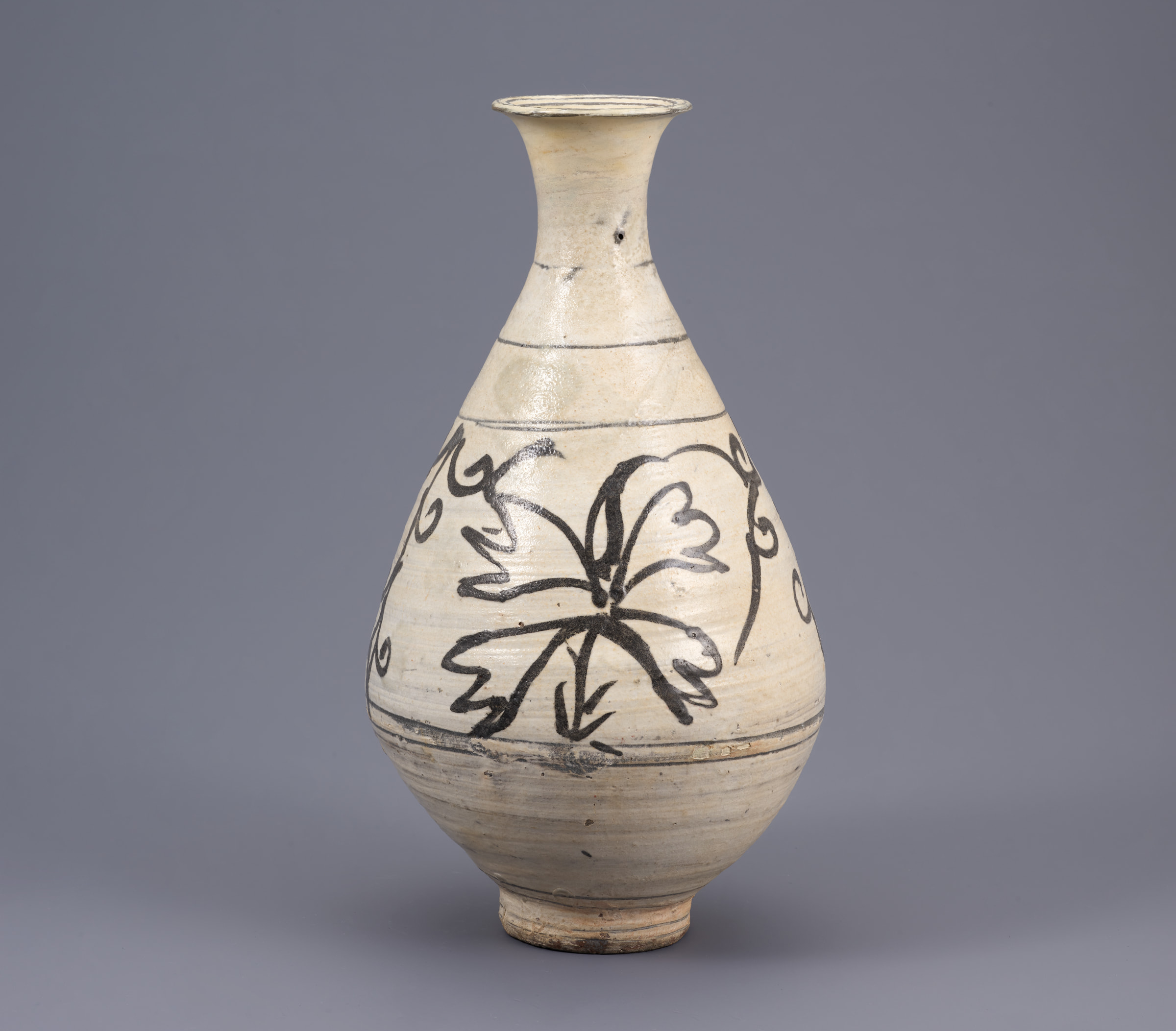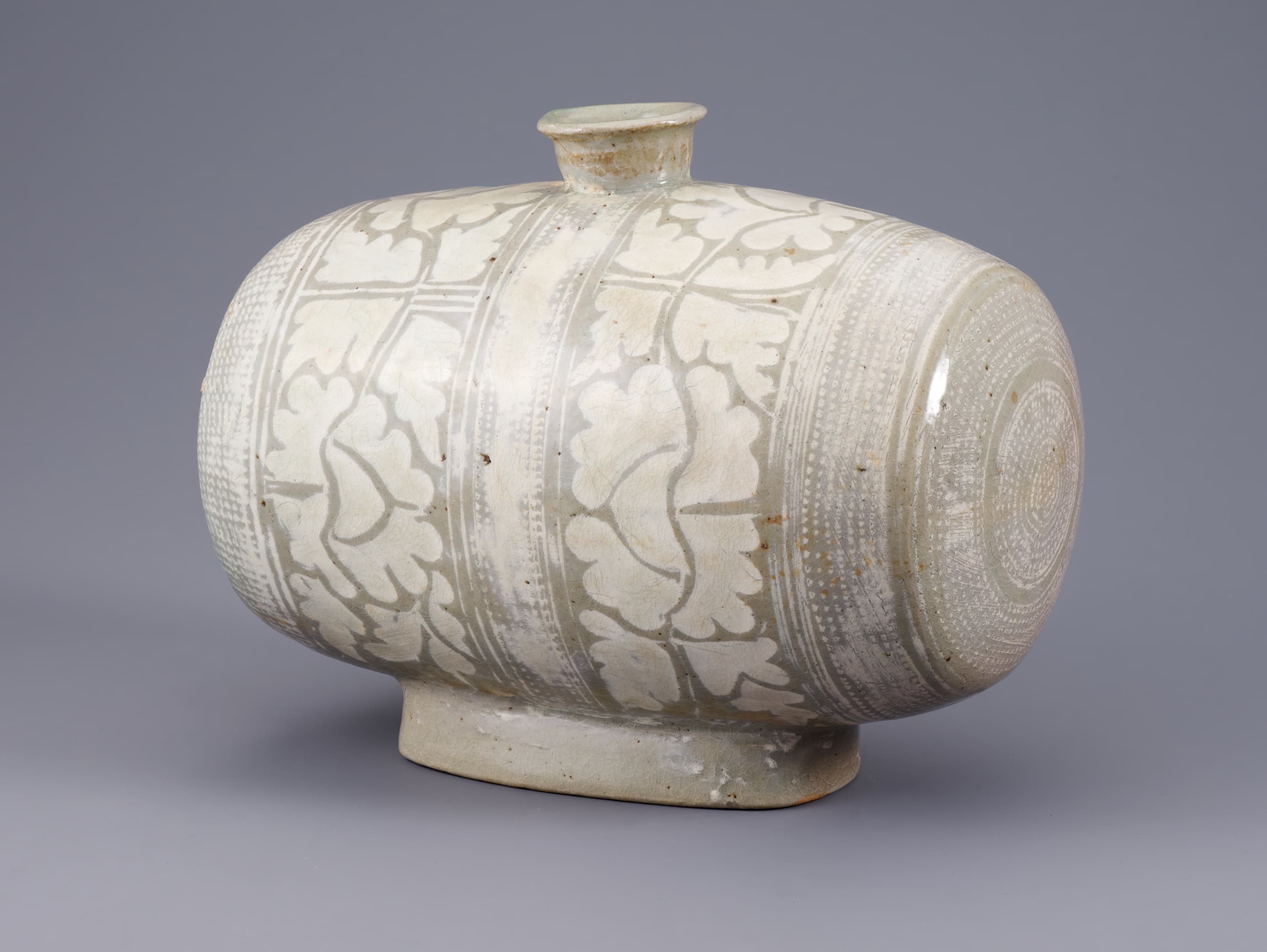The peony motif is prominently presented on various buncheong ceramics, including rice-shaped barrels, jars, and bottles in the special exhibition Perfectly Imperfect: Korean Buncheong Ceramics (fig. 1). Why is this flower often favored for drawing or carving on buncheong?
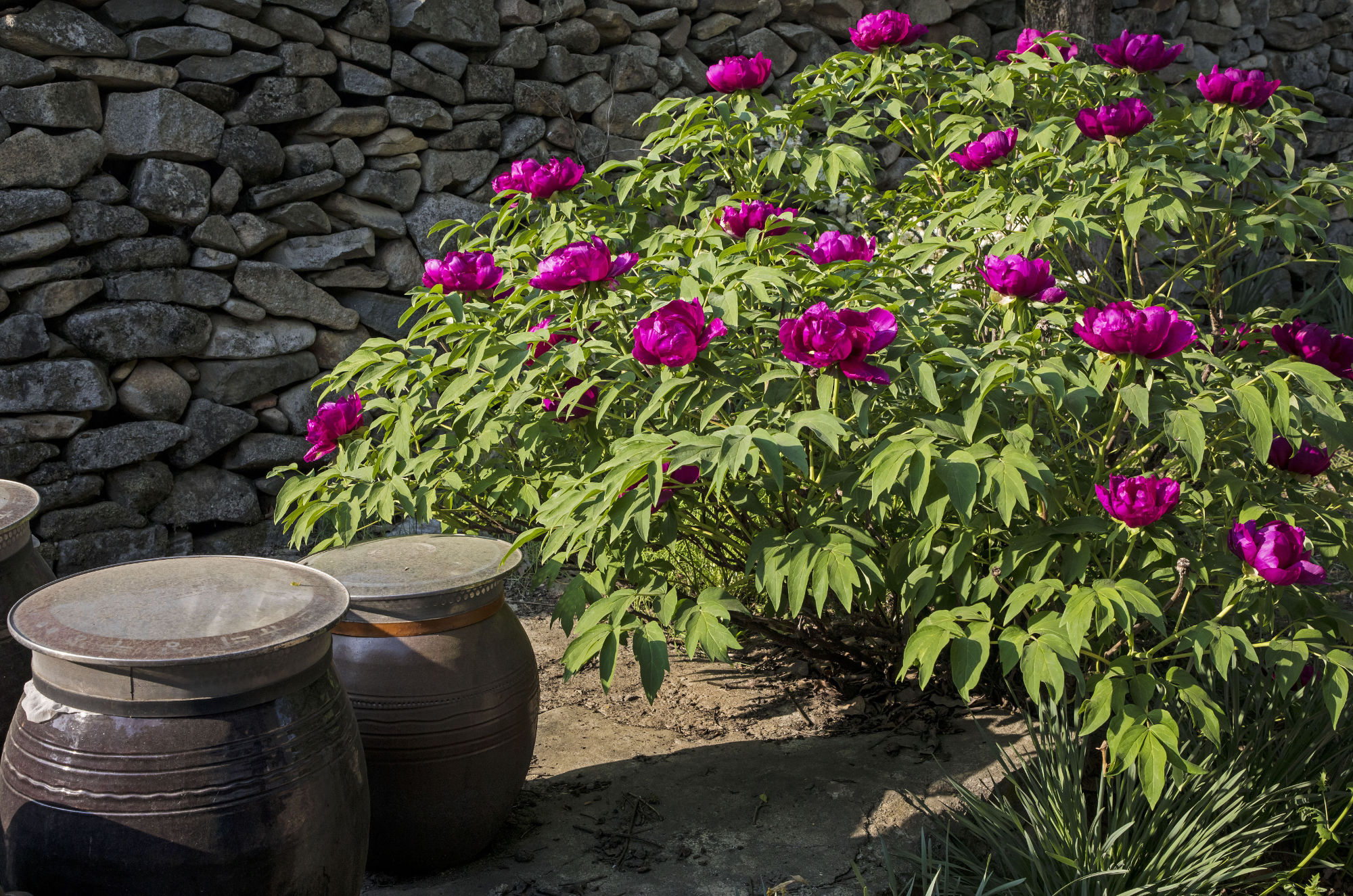
Renowned for its dazzling beauty and profound symbolic significance, the peony is special in Korean visual culture (fig. 2). With its large, lush blooms in shades of white, pink, and burgundy, this flower’s soft and velvety petals create a densely layered blossom. The tightly wrapped bud unfurls into a ruffled flower head, exuding grace as it stands tall on strong, sturdy brown stems, which contrast with the delicate softness of the petals. Complementing the blooms is the deep green, ample foliage that adds another vibrant dimension of color to this floral spectacle. For thousands of years, the Korean people have treasured this exquisite flower, adorning their gardens with it and appreciating its allure.
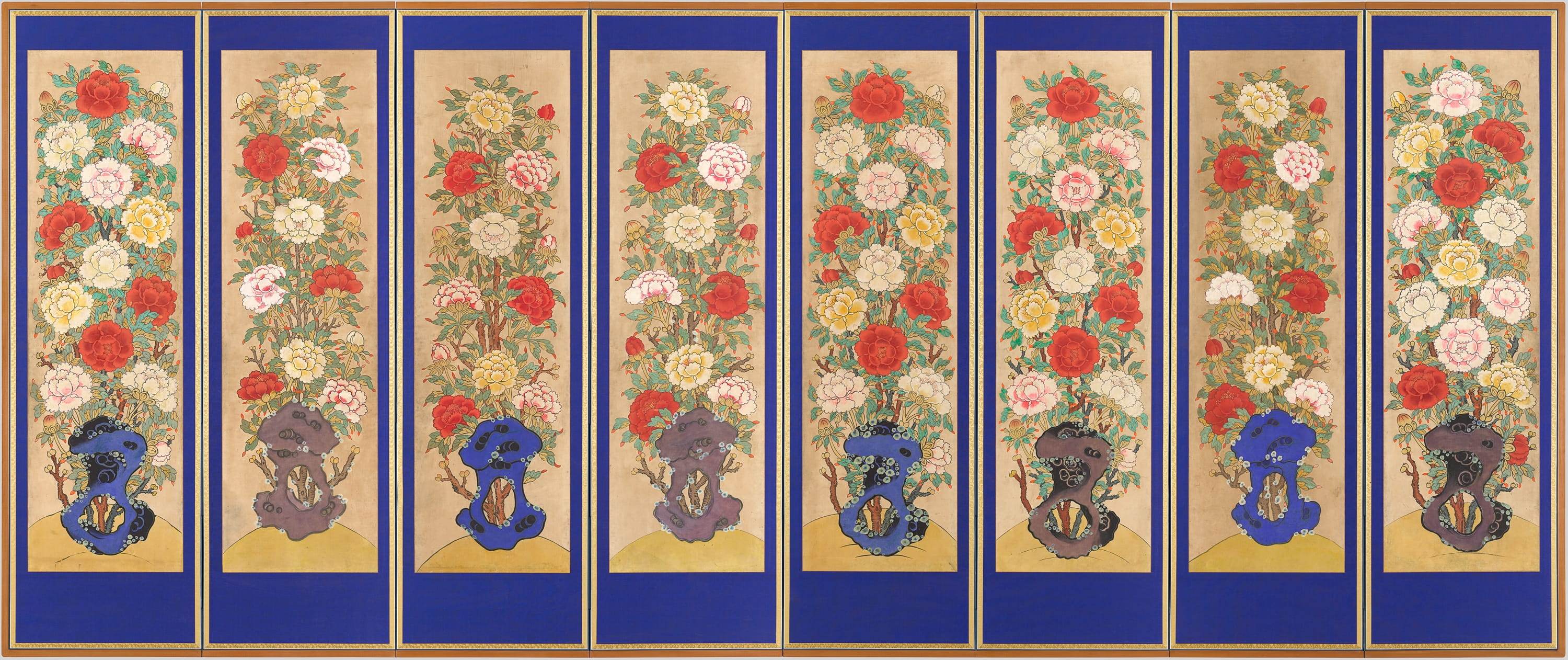
With its regal appearance, the peony earned the title “King of Flowers” in East Asia. The cherished value of peonies goes beyond their looks, embodying themes of wealth, prosperity, nobility, and honor. As a result, they have become beloved subjects in Korean art. In the court paintings of the Joseon dynasty (1392–1897), peonies are often depicted blooming in various colors juxtaposed against oddly shaped, mysterious rocks. Magnificent folding screen paintings of peonies were used in many royal ceremonies, not only for joyous occasions but for funerals and ritual offerings: where the king’s body and spirit resided, peony folding screens were always placed, elevating the dignity of the ceremonial space (fig. 3).1
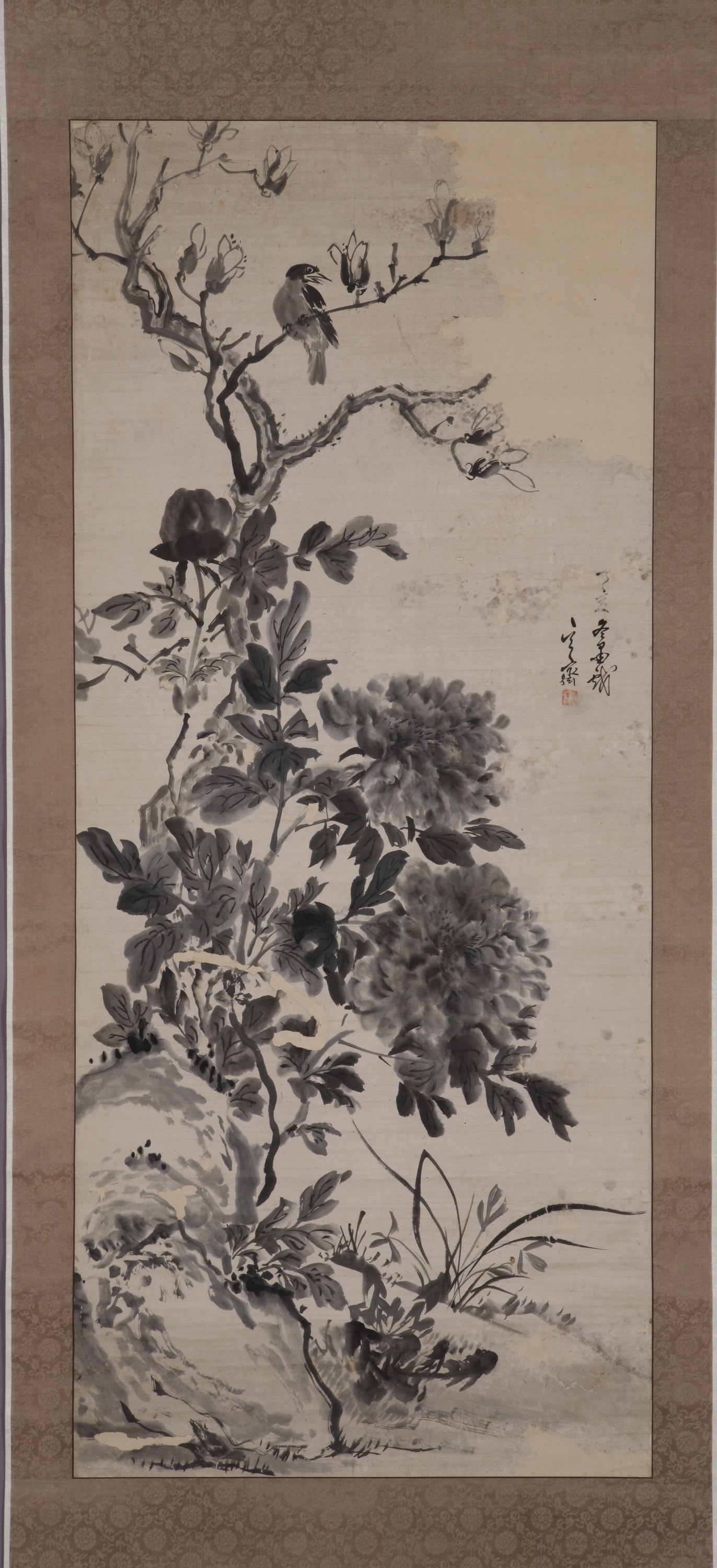
Joseon dynasty literati depicted the peony in various artistic styles. The flowers in nature naturally face northward, earning them the nickname “north-facing flower,” and were associated with the king’s sitting position. This symbolic connection to the king led to the peony being regarded as a representation of true gentlemanly virtue of loyalty. In the Joseon period, peony paintings created with monochromatic East Asian ink and subtle washes of color gained popularity among literati painters (fig. 4).
Within the craft domain, buncheong potters employ a variety of techniques to depict peony flowers and leaves, such as inlaying, incising, and painting, resulting in unique and creative expressions. One technique of particular interest is the carved-away (sgraffito) decorative technique, where potters deeply incise the contours of the peony motifs over the brushed white slip jar and carve away the background to unveil a dark backdrop color. This meticulous process captures the volume and elegance of the flower, imbuing the ceramics with a pleasing abstracted design. Buncheong ceramics featuring the peony motif in this carved-away style can only be found in the southwestern area of the Korean peninsula. Some scholars have suggested that this style may be an example of cultural exchanges with the tradition of northern Chinese ceramic production.2 The large jars featuring the peony motif in the carved-away technique serve as an excellent illustration of the distinctive regional attributes of Korean buncheong pottery while also being embedded within the broader global context.
Ji Young Park (JYP)
National Museum of Korea Fellow of
Korean Art
Notes
-
National Palace Museum of Korea, Annyeong Moran. Peonies: The Flowers of Peace and Prosperity (Seoul: Gungnipgogungbangmulgwan [National Palace Museum of Korea], 2021), 303.↑︎
-
KIM Yunjeong, “Joseon 15 segi jungguk bukbang jagi munhwa-ui yuip-gwa buncheongsagi-e michin yeonghyang” [The introduction of north China’s ceramic culture to fifteenth-century Joseon and the influence on buncheong ware], Misulsahakyeongu [Korean journal of art history], no. 312 (December 2021): 5–33.↑︎
